Safnahúsið (The House Of Collections), Reykjavik
Reykjavik’s House of Collections displays works from the collection of the National Gallery of Iceland in a charming setting. Great for art lovers who want to get to know Icelandic art past and present.
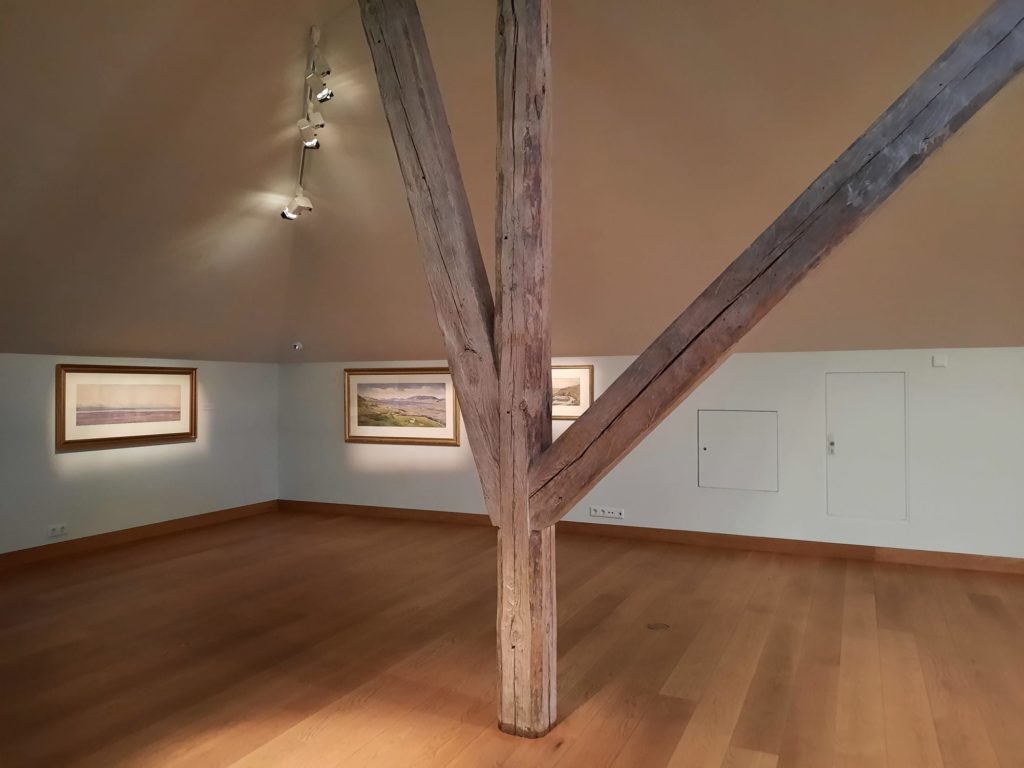
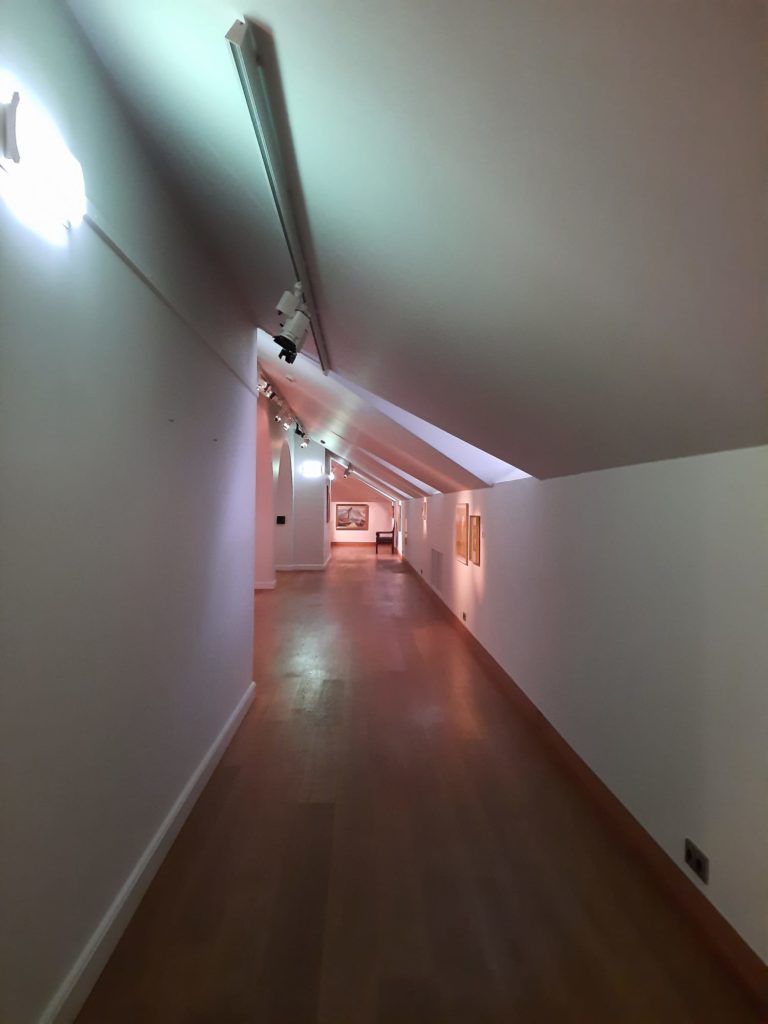
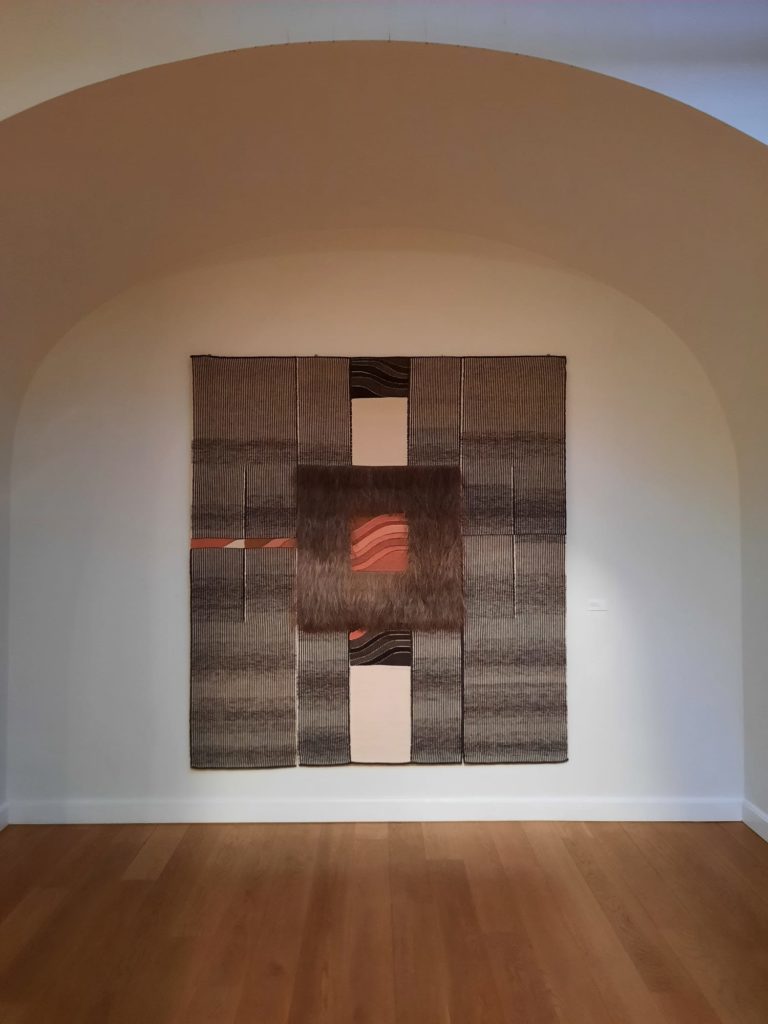
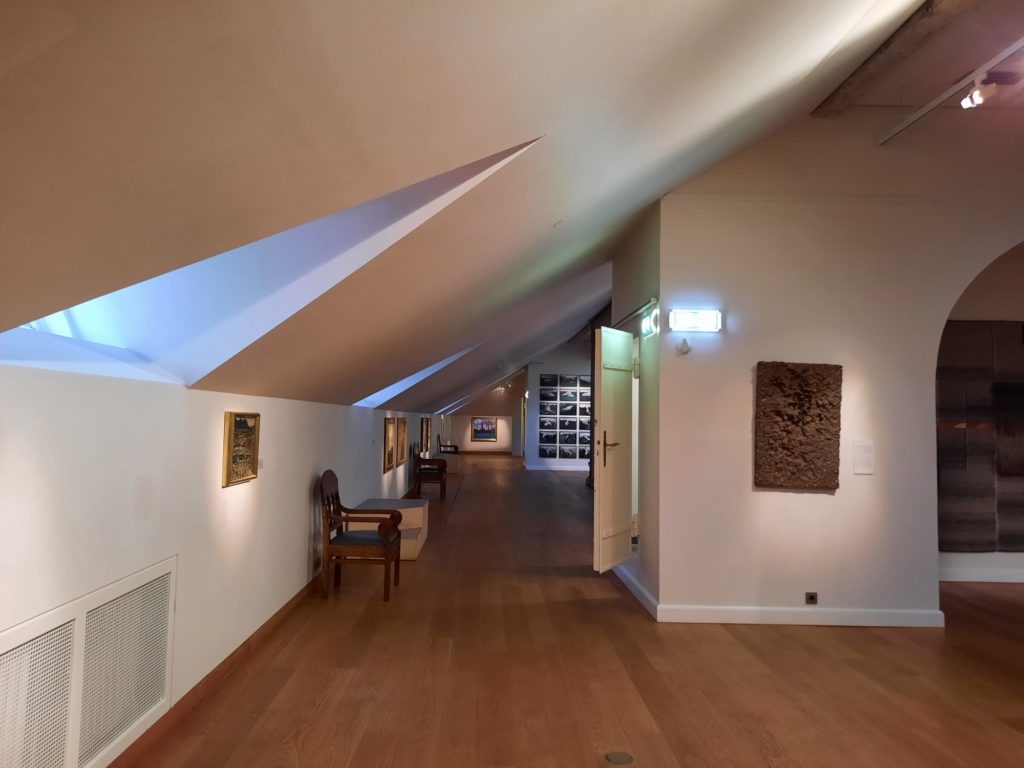
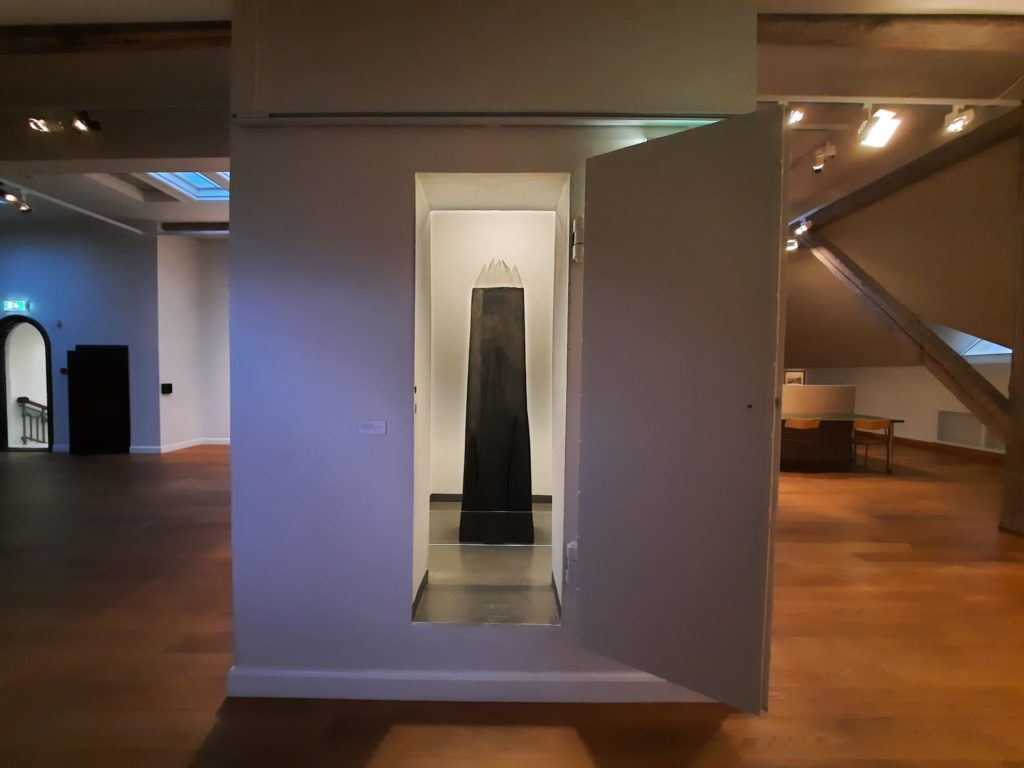
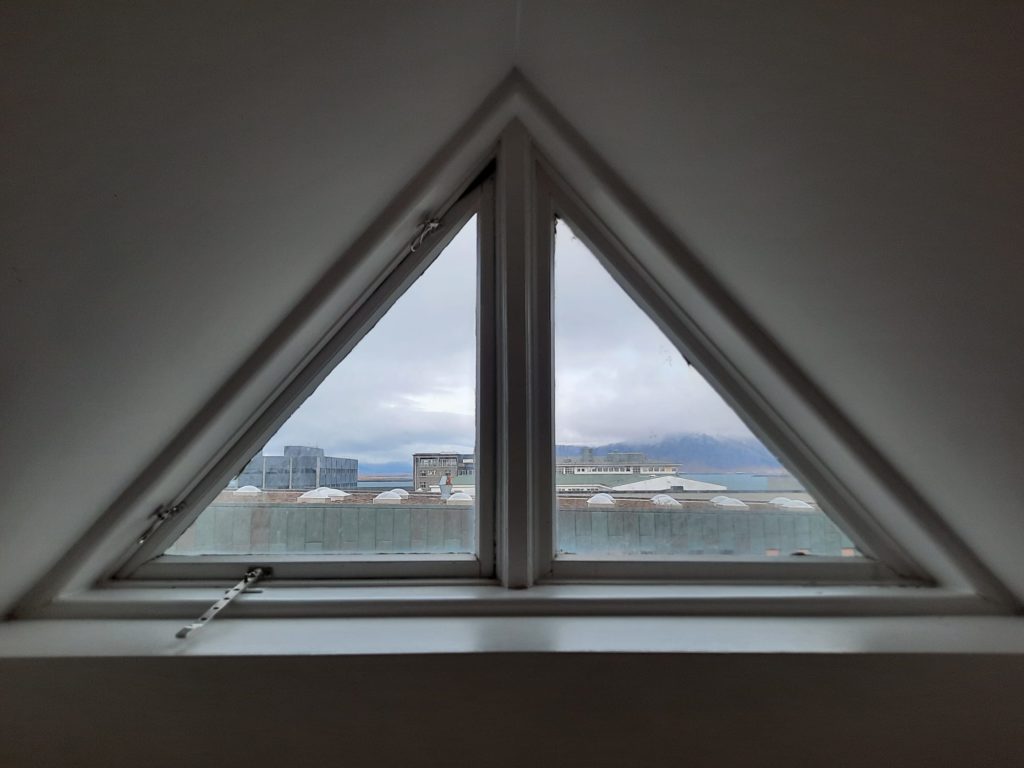
Safnahúsið: The House Of Collections
I’m a little confused by Reykjavik’s Safnahúsið. I feel like it’s been through some changes in recent years. Firstly, I’ve variously seen it written as The Culture House, House of Cultures and House of Collections. If you see references or signs to a House of Something, you’re probably on the right track. The Wikipedia page says it was formerly known as Þjóðmenningarhúsið: The National Culture House. This same page also says it’s been part of the National Museum of Iceland since 2013, but I have a feeling it’s now part of the National Gallery of Iceland instead.
The building itself dates to 1906-8 and was originally the National Library. The library remained here until 1994. The National Archives were there from 1909-1987, and the National Museum of Iceland moved in in 1908 and moved out when it got its own building in 1950. In guidebooks on Reykjavik you might see mentions of a display of manuscripts among other things on view here. I certainly did. But when I visited, I found art instead.
There are a few ‘conglomerate’ type museums in Iceland. The Reykjavik City Museum has several branches for instance, including this one and this one which we have visited. I’m sure that, in a country with quite a number of museums, this allows smart pooling of resources. It also means some unexpected choices: for instance I expected to find the collection of the National Gallery of Iceland in the National Gallery of Iceland. But instead I found it here! Oh well, at least I found it.
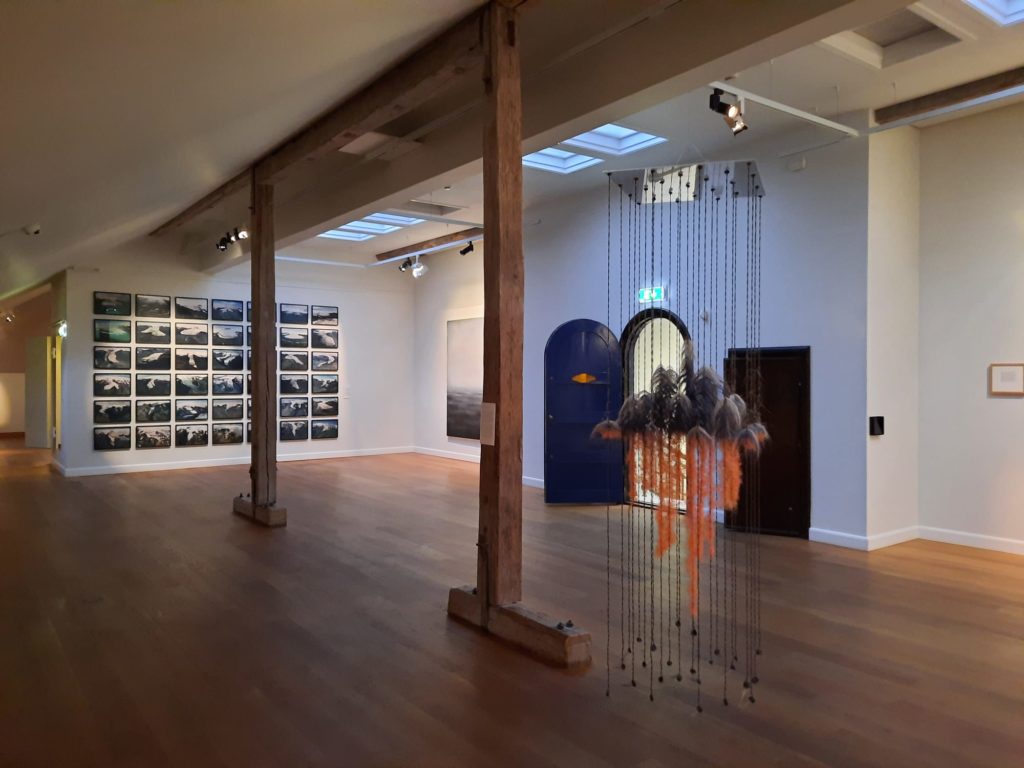
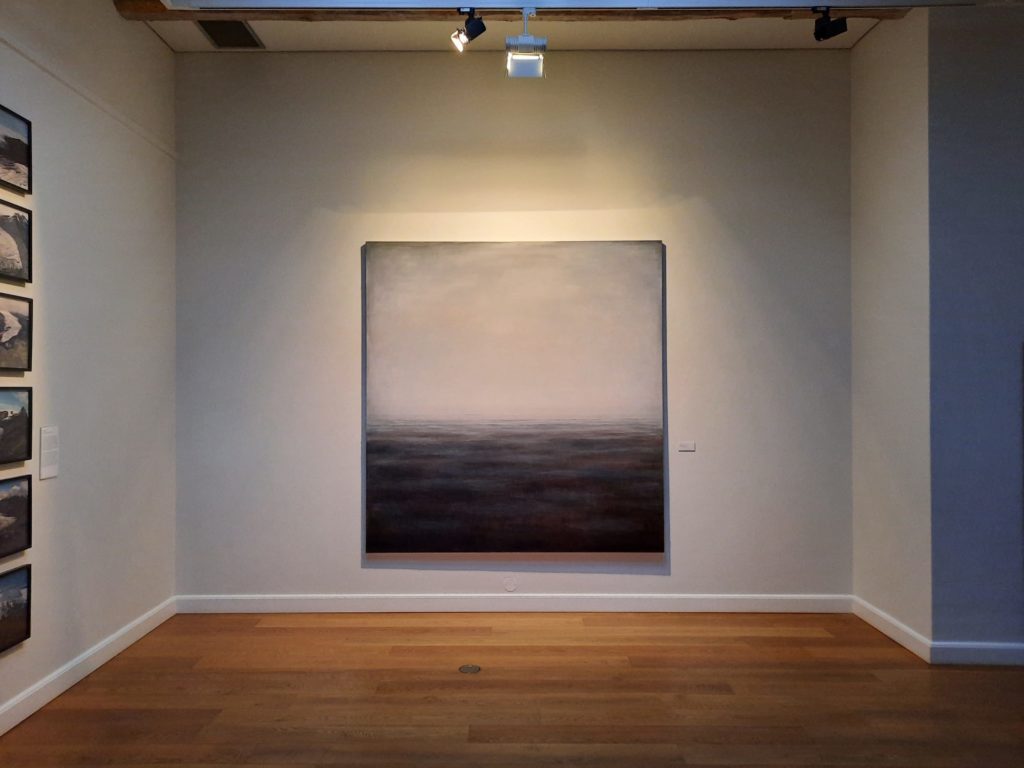
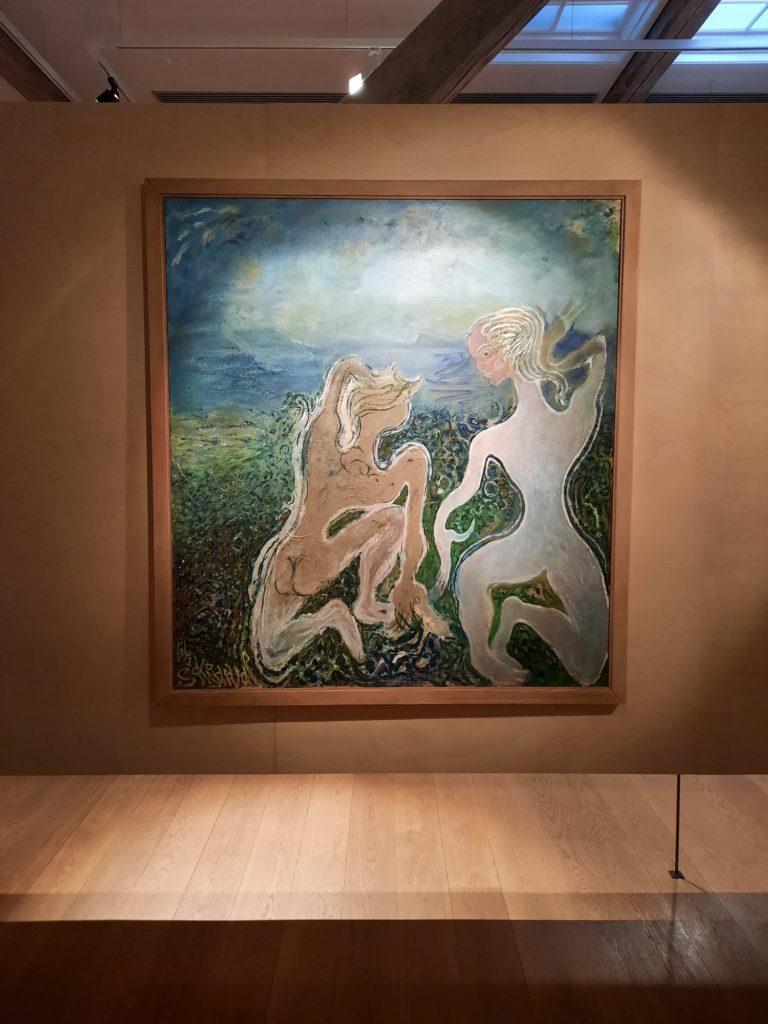
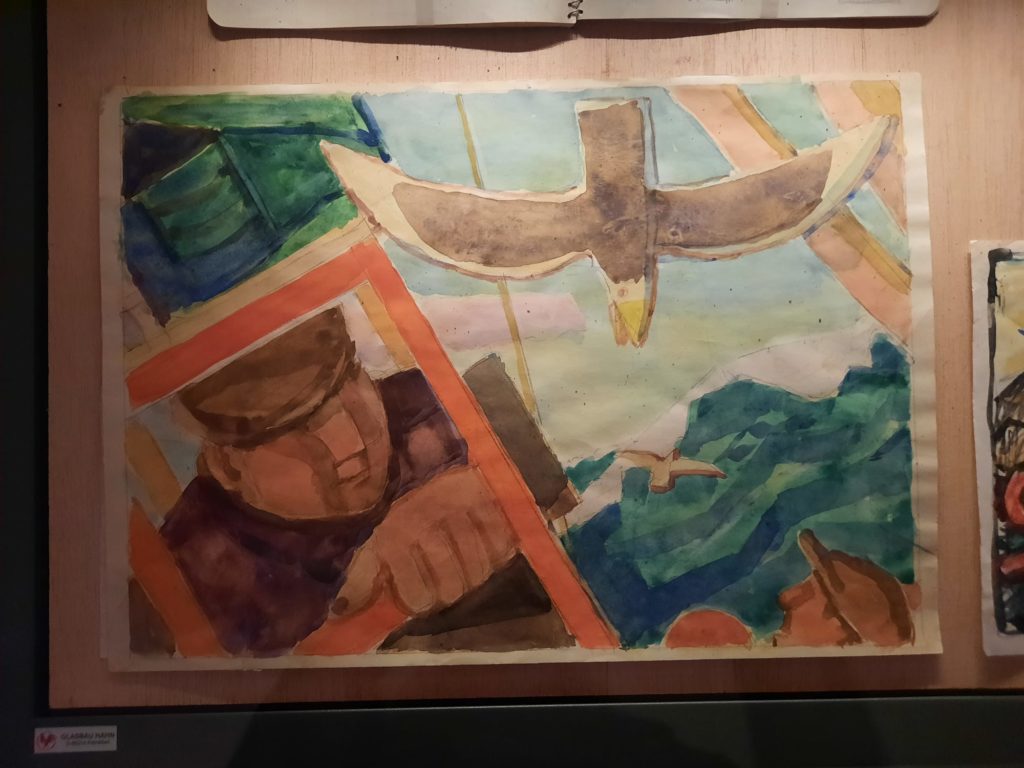
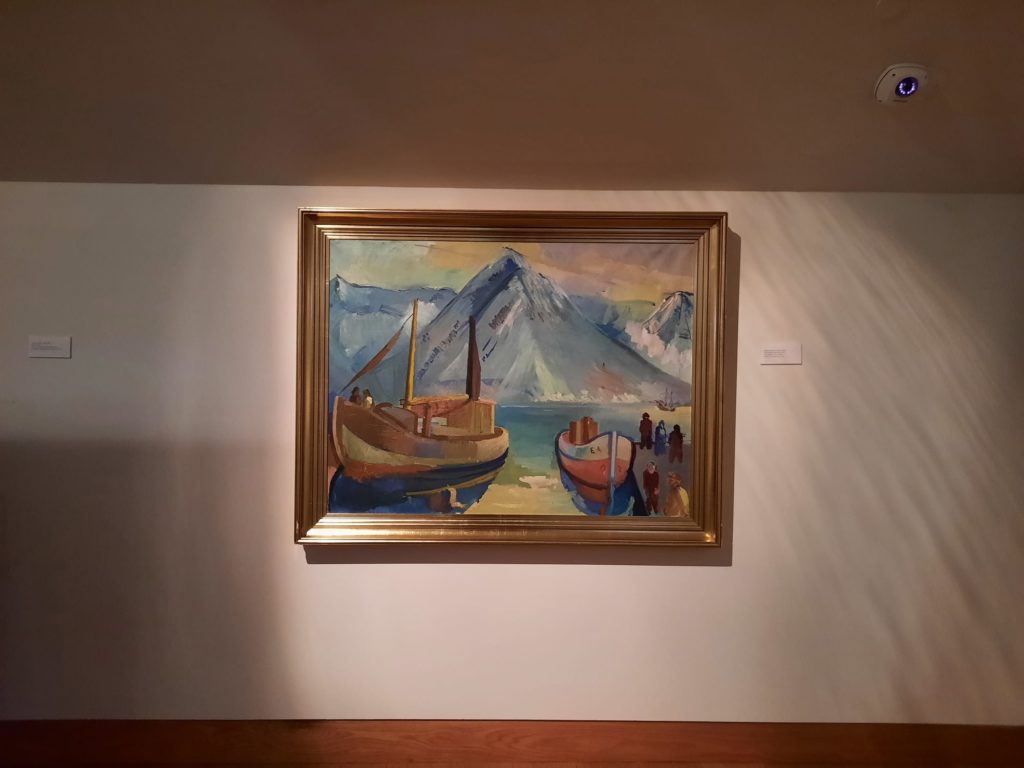
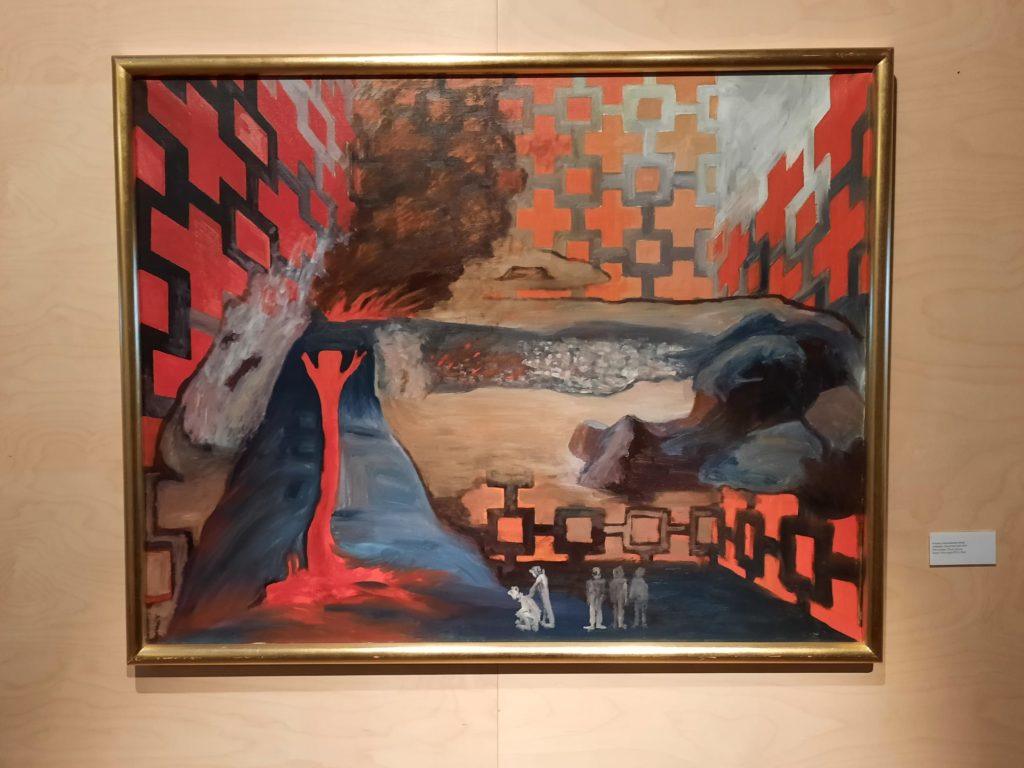
Icelandic Art
I knew of precisely one (1) Icelandic artist before coming to Iceland. Or Icelandic-Danish. So maybe I knew 50% of an Icelandic artist. I’m talking of course about Ólafur Elíasson. So I was starting from a place of curiosity and willingness to learn. Partly why I was a little disappointed not to find Icelandic art at the National Gallery.
I came away with a much better picture. When I visited there were three semi-permanent exhibitions on view. Treasures of a Nation is a sort of greatest hits from the national collection. The Ocean is about… the ocean. And Resistance, Interplay of Art and Physics is the slight curve ball. Together the exhibitions create dialogues between works from different periods, through the use of groupings by theme and medium. Landscape paintings look very different 100 years apart, for instance, although the landscapes themselves may not have change. Influences from international art movements and changes in Icelandic society are all internalised and reflected in the artworks on display.
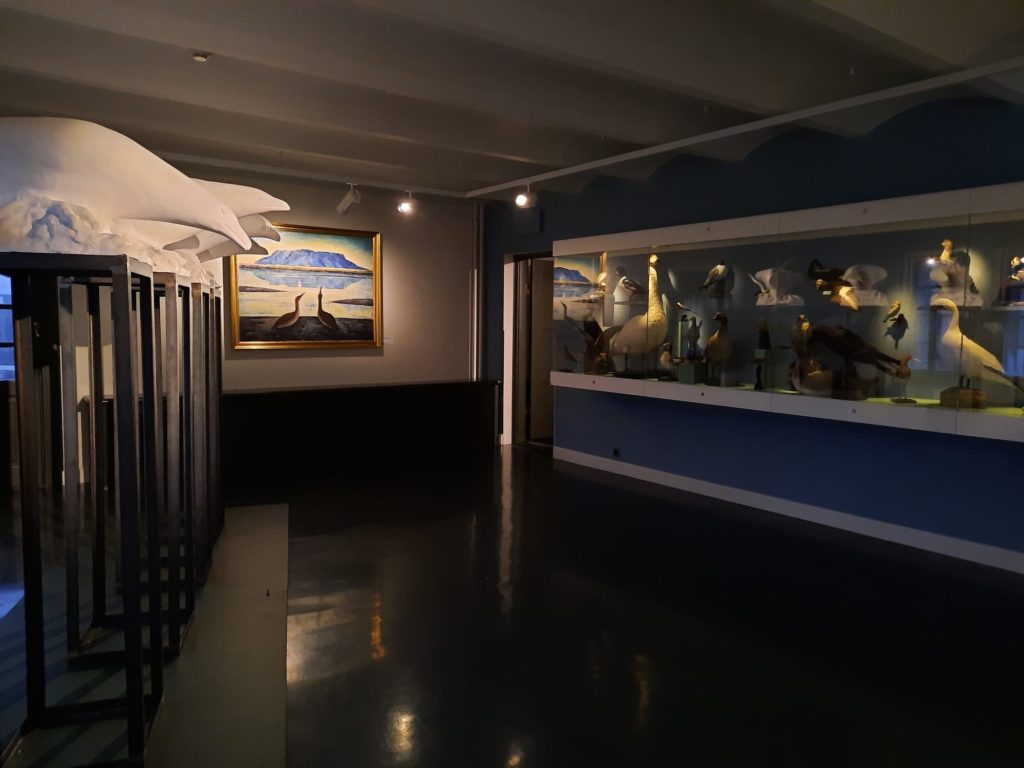
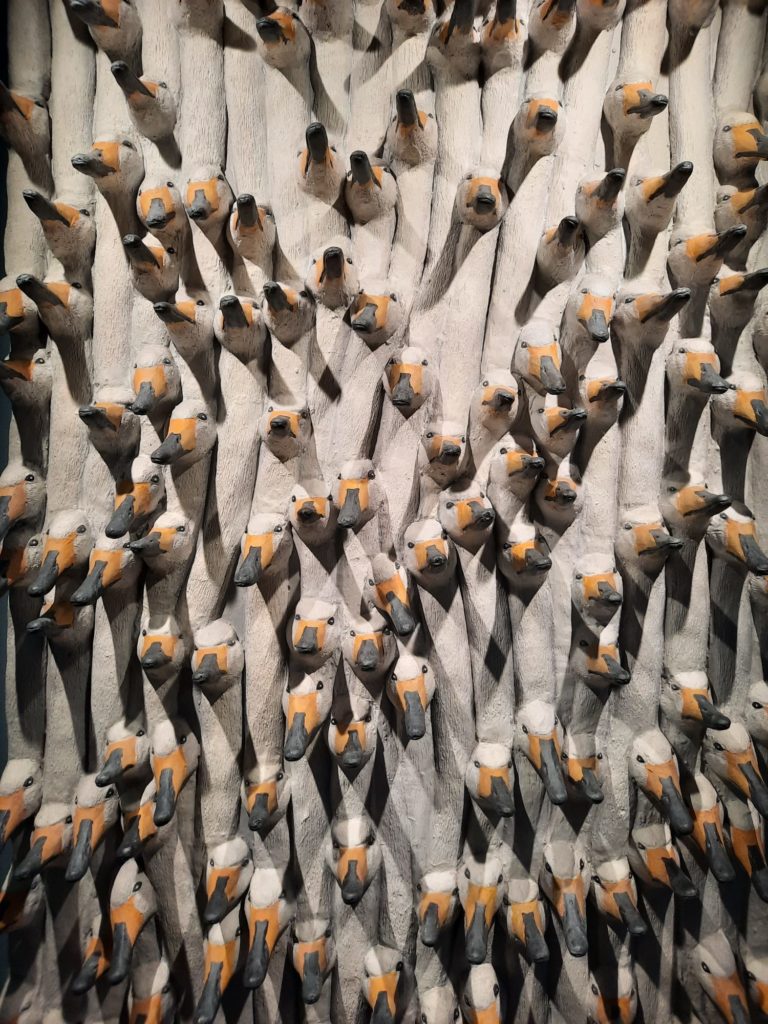
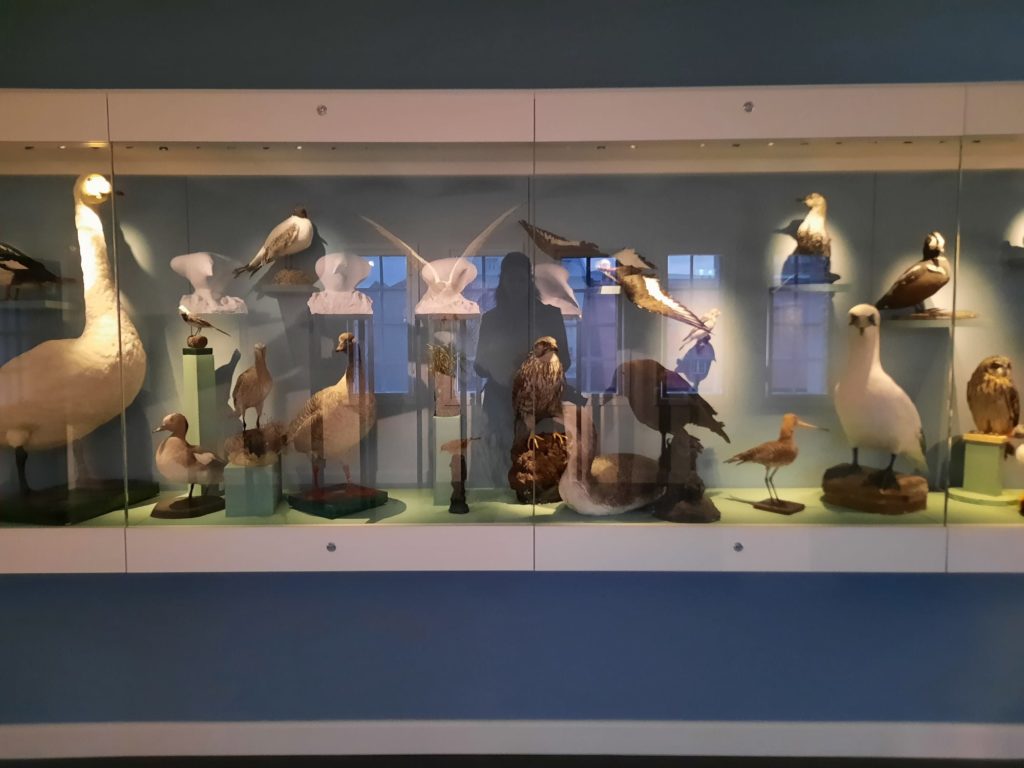
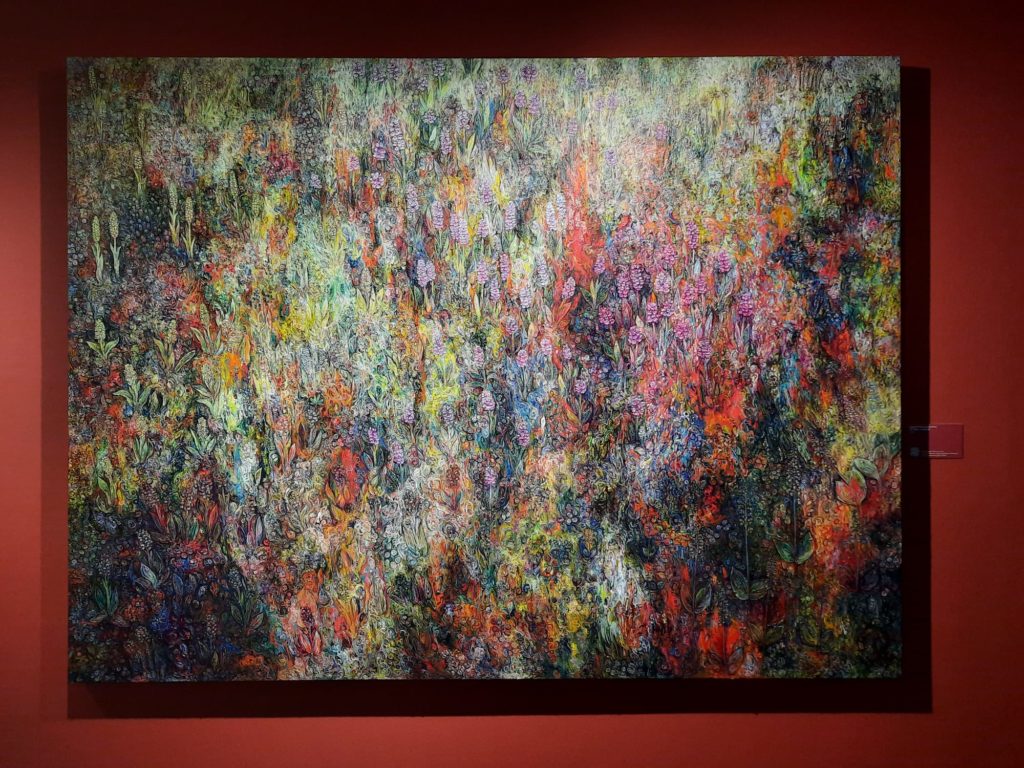
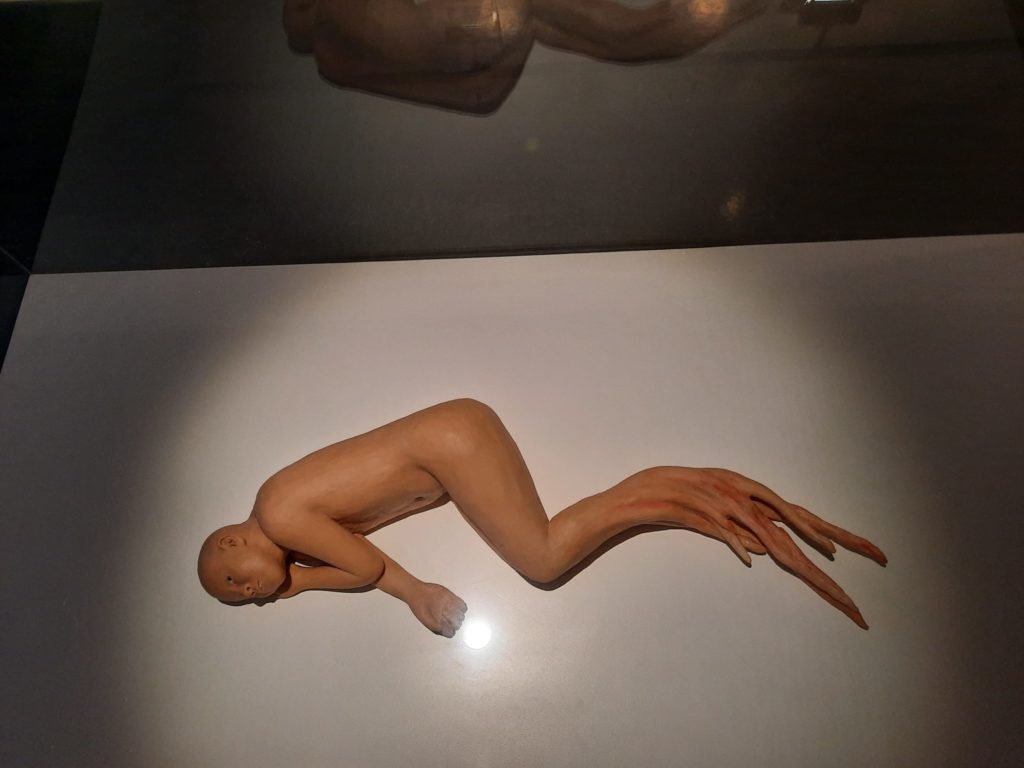
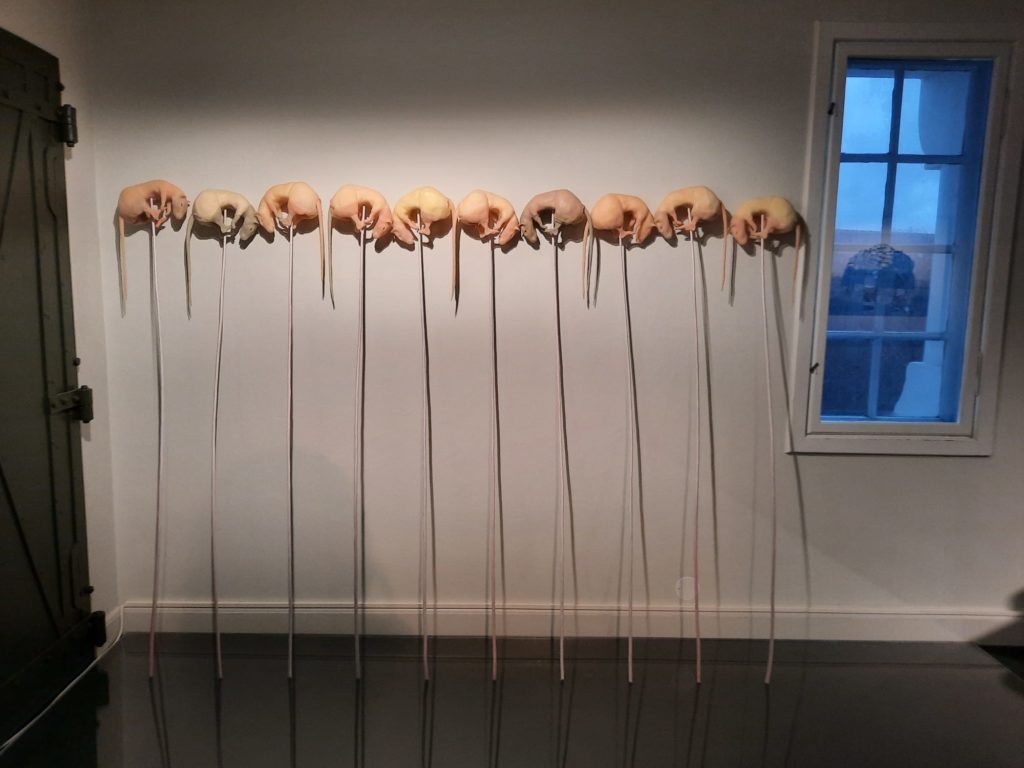
A Few Highlights
How to pick favourites amongst more than a century of artworks across different media? Well, how about I just go with what I like? I started at the top floor of the museum and worked my way down so let’s do that. Among the artworks up here, I was first drawn to the work of Ásgerður Búadóttir. Born in 1920, she was a pioneer of woven art in Iceland and used materials from her surroundings, including Icelandic horse hair. You can see one in the top section of images above, third image down. The weaving is so wonderfully tactile, I wanted very badly to touch it and smell what I imagined was a nice woollen smell. But I consider myself a museum professional so I refrained. I also loved the attic space itself, with exposed beams and steps to help you look out the window at the wintery landscape beyond.
On the next floor down things definitely start to get interesting. In a bird-themed room I enjoyed Swans by Hulda Hákon. It’s a playful work, and reminded me of visiting the swans in Wapping during various lockdowns in 2020. A couple of rooms further on and the contemporary works were really standing out. One, by Gunnhildur Hauksdóttir, is called Rat Choir. It’s a little hard to describe: embryonic rats on sticks voiced by a women’s choir if you put on the adjacent headphones? Take a look at the images immediately above and below this section of text to see what the rats and their voices look like.
Interesting how the works I’ve noted so far are all by female artists. I don’t know if this is a deliberate decision to have a good gender balance or if the artists of Iceland tend to be female, but there was a lot of work by female artists to choose from. In this regard Iceland is probably helped by its late arrival at the artistic table. As I’ve noted elsewhere the first professional artist in Iceland worked in the late 19th Century, when it was becoming slightly less unusual to be a female artist. So I bet the gender balance of their National Gallery collection is better than most.
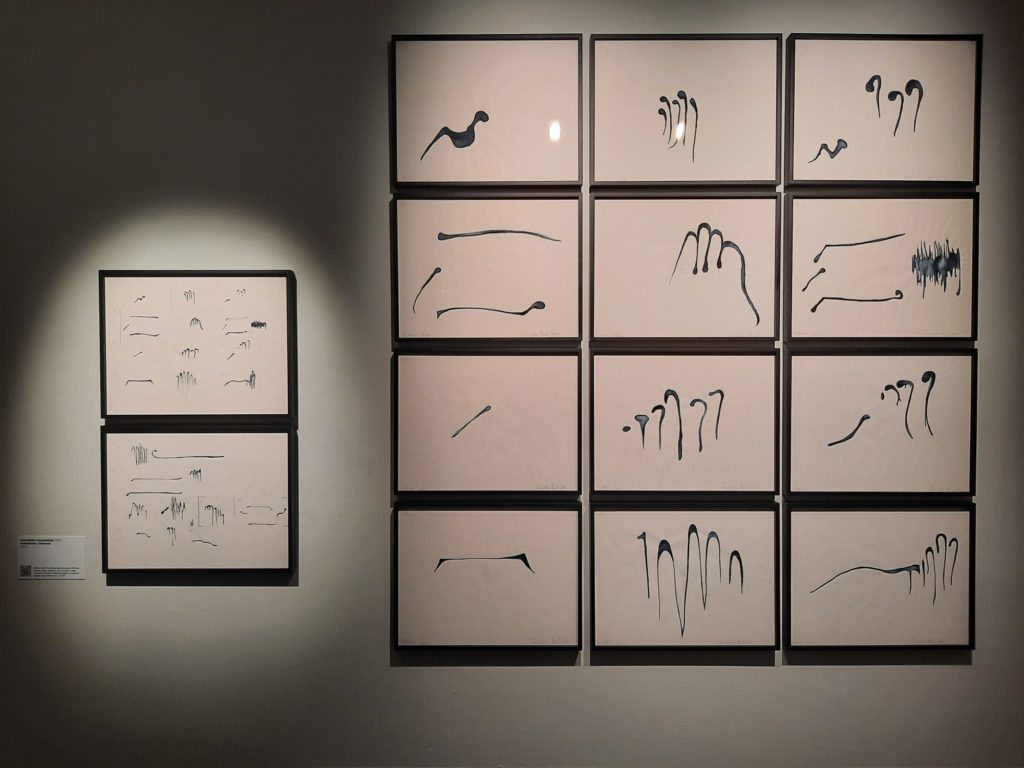

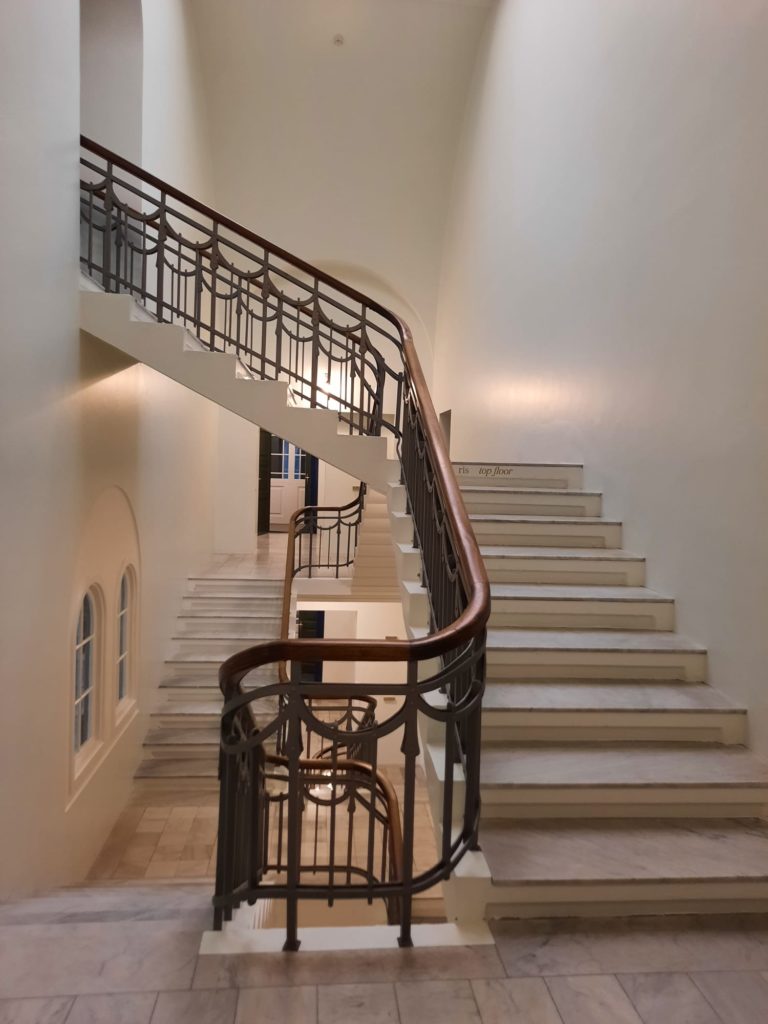
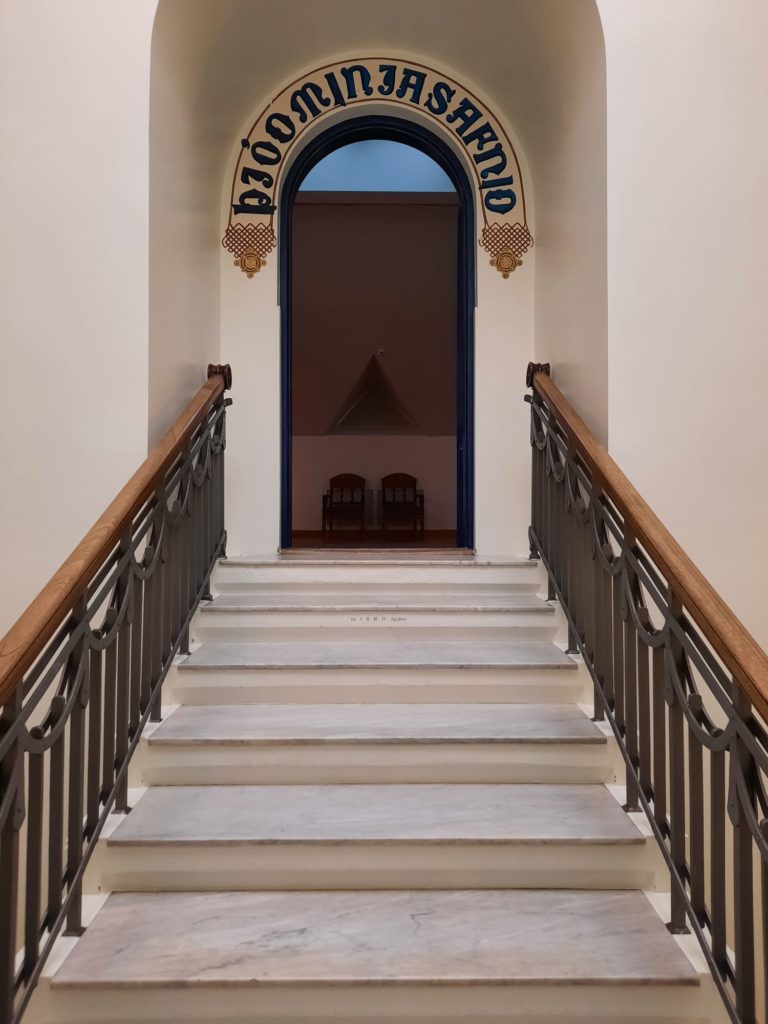
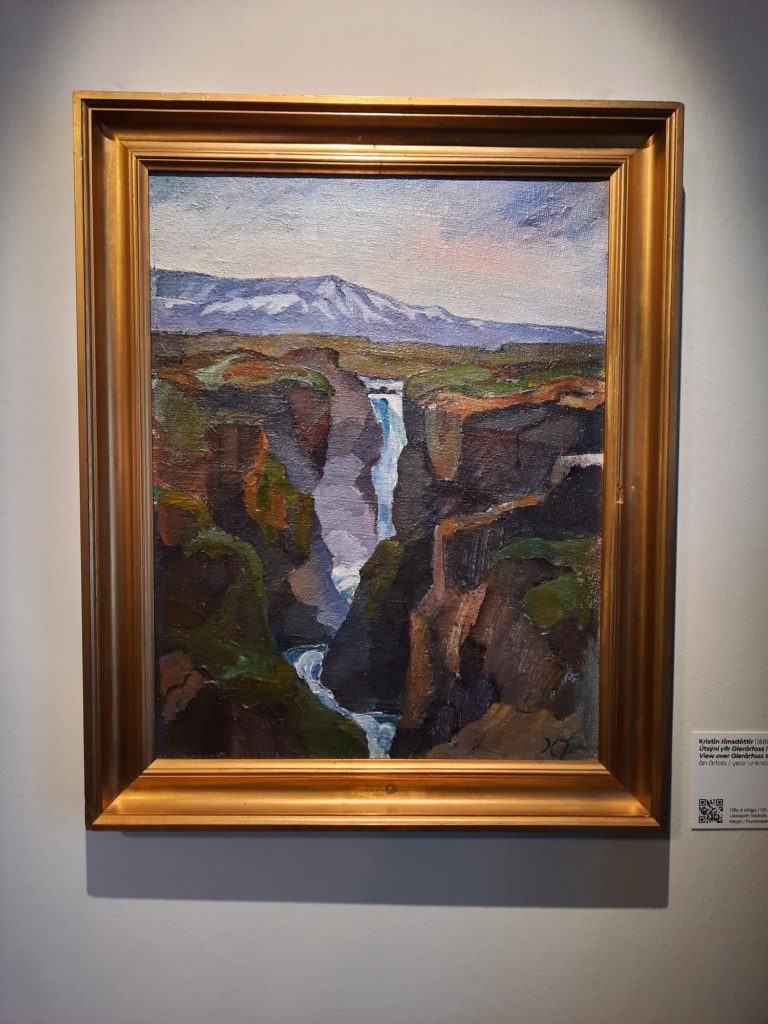
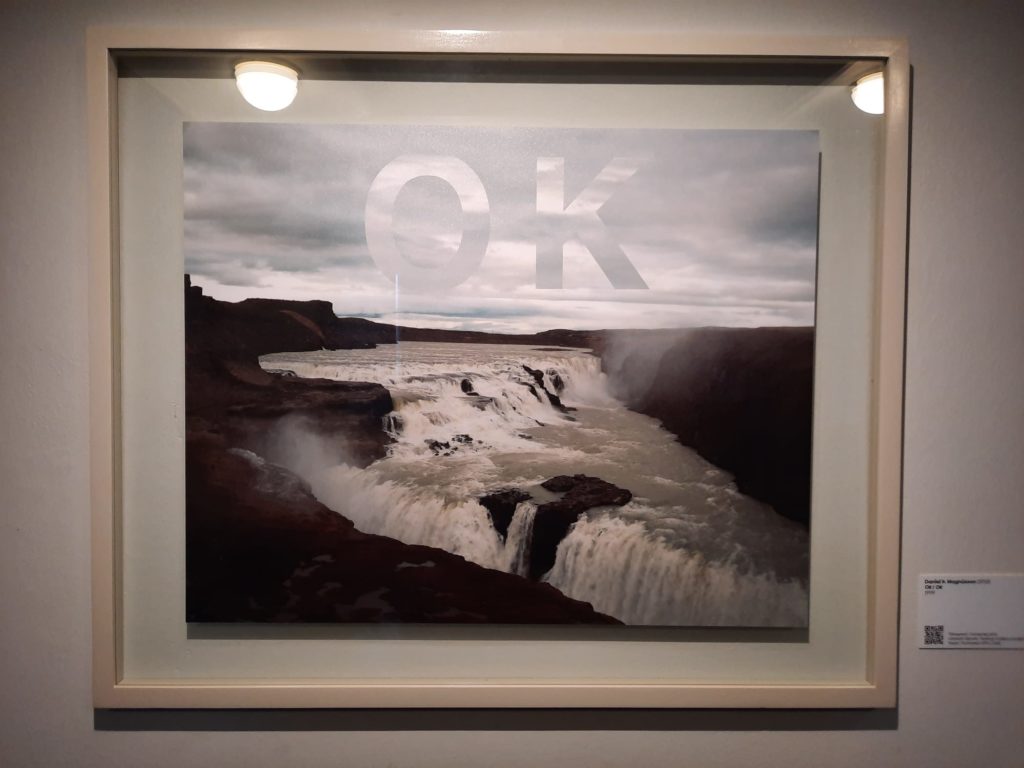
Exploring The House Of Collections Itself
As well as the art, I also like to step back and look at the building it’s in. Museum buildings are an interesting thing. Up until the early 20th Century they were mostly quite grand: temples to art or culture, you might say. In more recent decades we have seen some museums deliberate reject this exclusivity and barrier to entry. Other places have gone for ‘statement’ museums, where the museum itself is the draw more than what’s inside (think of the Guggenheim Bilbao, for instance).
The House of Collections falls mostly into the former camp. It’s not very grand, but grand enough in the context of Reykjavik at the time. Apparently that view I enjoyed out of the top floor window is something of a tradition here, as the building initially towered over the developing city so was a good vantage point. It’s full of odd half floors, marble staircases, and liminal spaces like corridors as well as old safes and other small nooks and crannies. This lends itself quite well to the exhibitions on display. You can poke your head around every corner, including into boardrooms, and look at the art. Off on its own is a very noisy sculpture: I set it off by pushing a big red button then slightly regretted it as it banged and clattered.
The point is that, unless you’re visiting on quite a busy day, it rather feels like you have the place to yourself. You can take your time, explore at leisure, and get to know the art of Iceland. When there are interactives (like a rowing machine that sets off a projection of water on the walls), you can try them out safe from prying eyes. For me, who visited more museums than you can shake a stick at over my long weekend trip, it was an enjoyable and memorable experience.
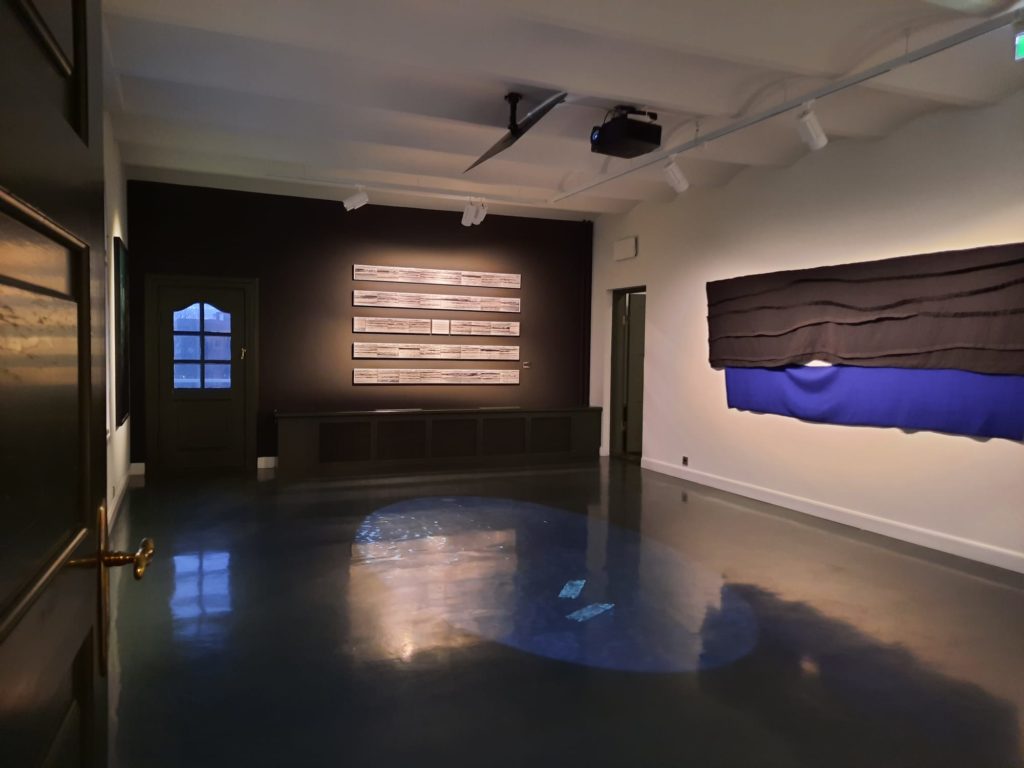
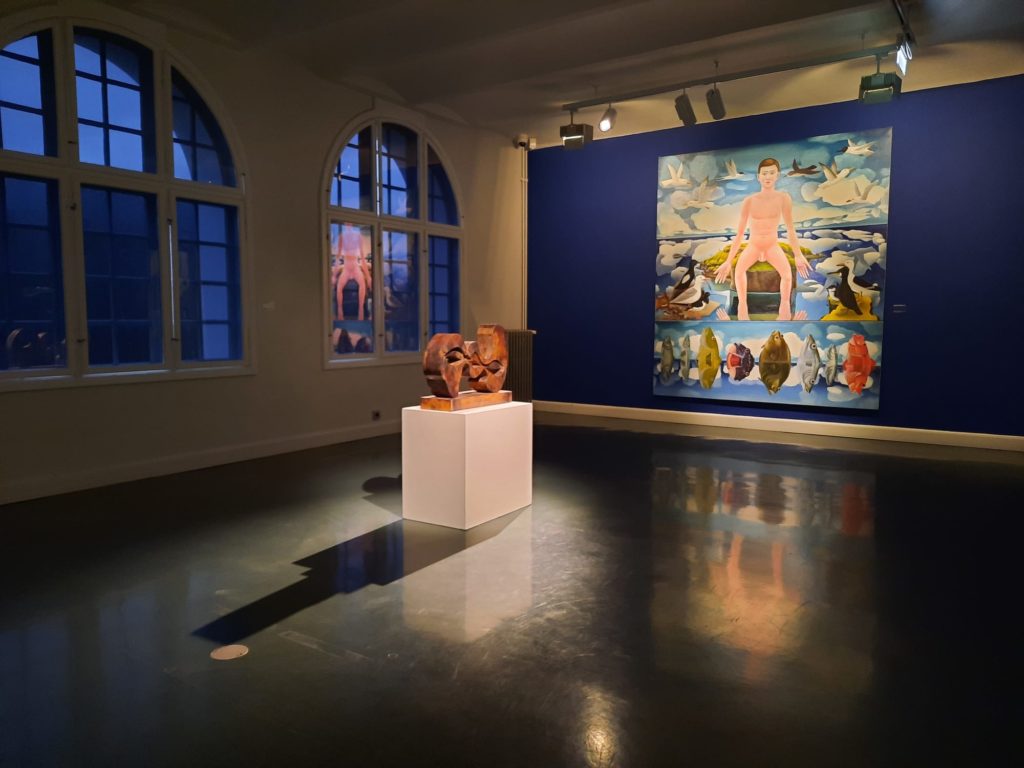
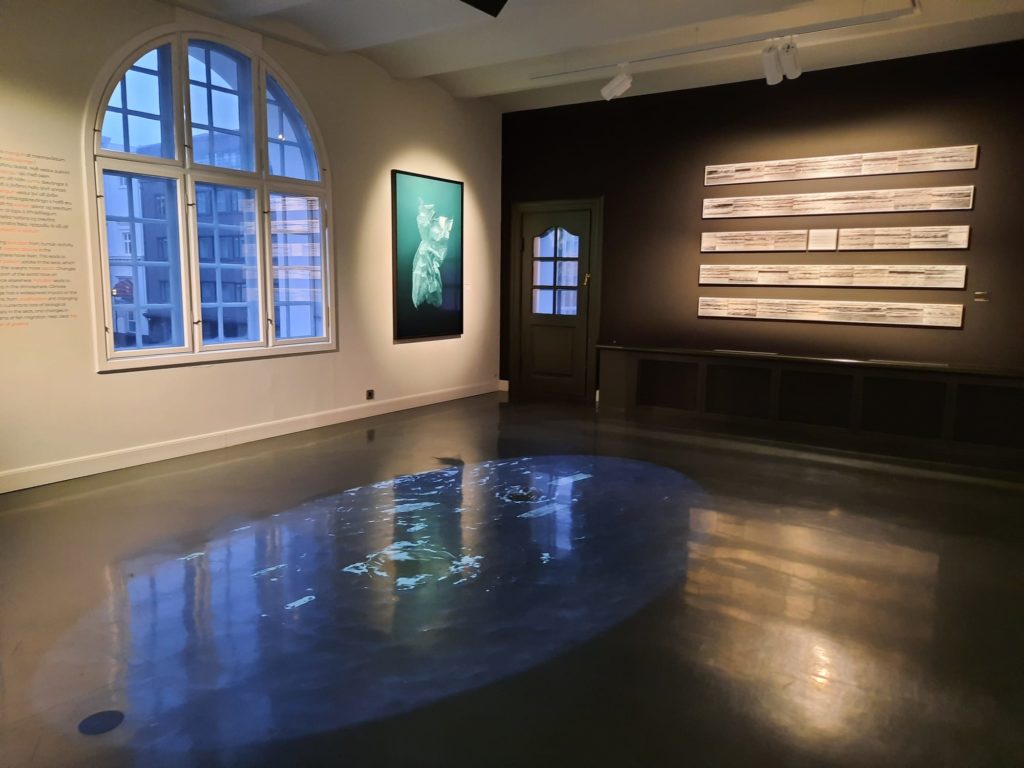
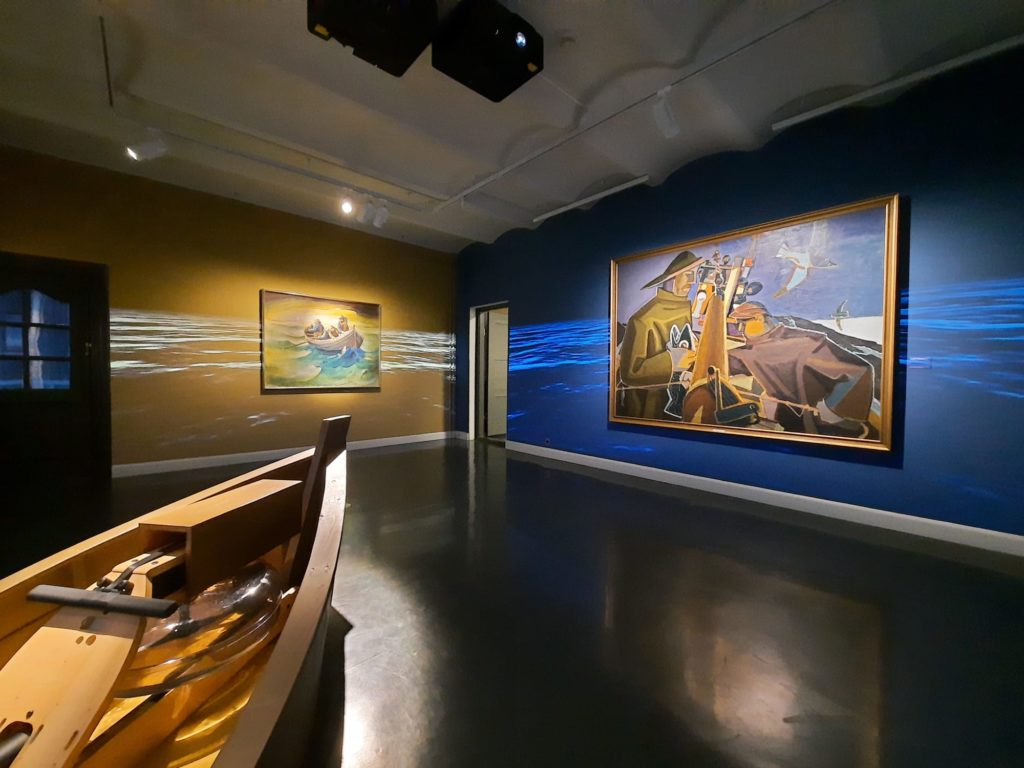
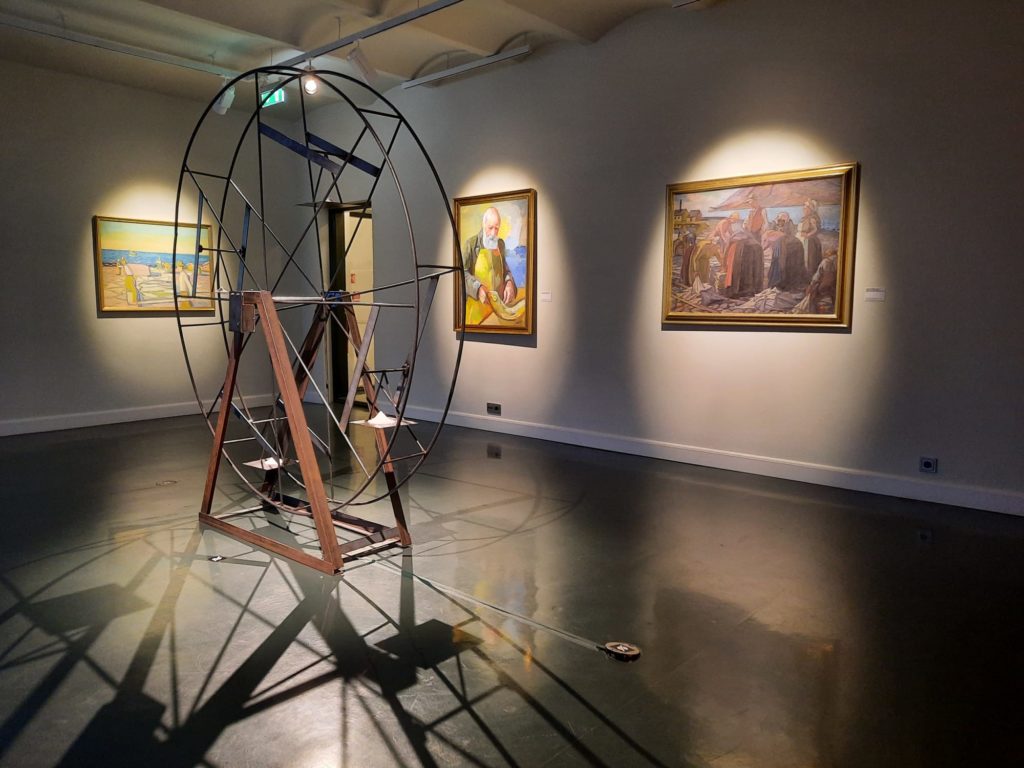
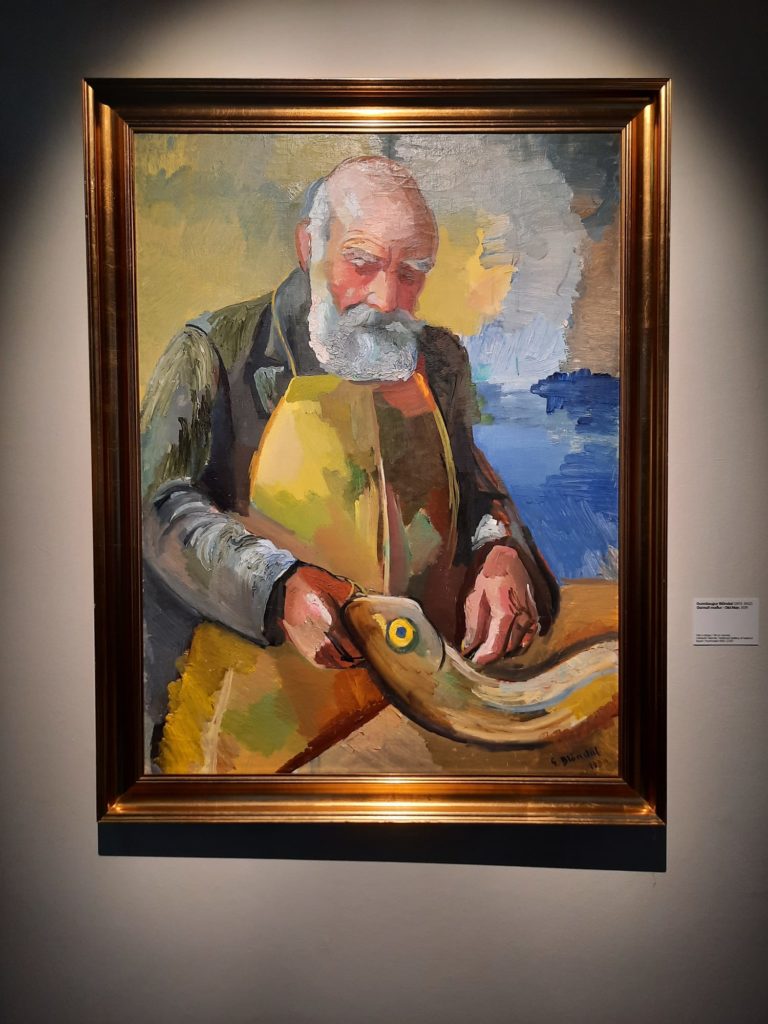
Final Thoughts On The House Of Collections
As I’ve just said, this is a very enjoyable museum visiting experience, at least in my opinion. It’s what I was hoping for when I visited the National Gallery of Iceland: a selection of Icelandic art from across the decades, curated in an interesting manner and displayed well.
If you fancy a pause to consider what you’ve seen (or recover from that very noisy sculpture), you are in or out of luck depending on how you look at it. Something I noticed in Reykjavik is that museum cafes do not seem to have survived the pandemic. Or have yet to return. Most museums allow you to sit in the cafe space and even provide free tea and coffee, but I saw very few doing more than that. The House of Collections has quite a nice cafe so this is one where I did sit down with a cup of tea to gather my thoughts before heading off to my next stop. If you’re not running a full cafe, this is at least a visitor-friendly alternative (unlike the Art Institute of Chicago if you recall).
If you are short on time in Reykjavik and interested in art, this is my top pick. It’s a good art museum, all the more so for being a little unexpected for me with my out of date guidebooks. It’s centrally located, and has the views and sort of cafe we’ve already discussed. What more could a museum lover ask for?
Salterton Arts Review rating: 4.5/5
Treasures of a Nation on until 10 February 2023
Resistance, Interplay of Art and Physics on until 28 October 2023
The Ocean on until 23 August 2026
If you see this after your page is loaded completely, leafletJS files are missing.

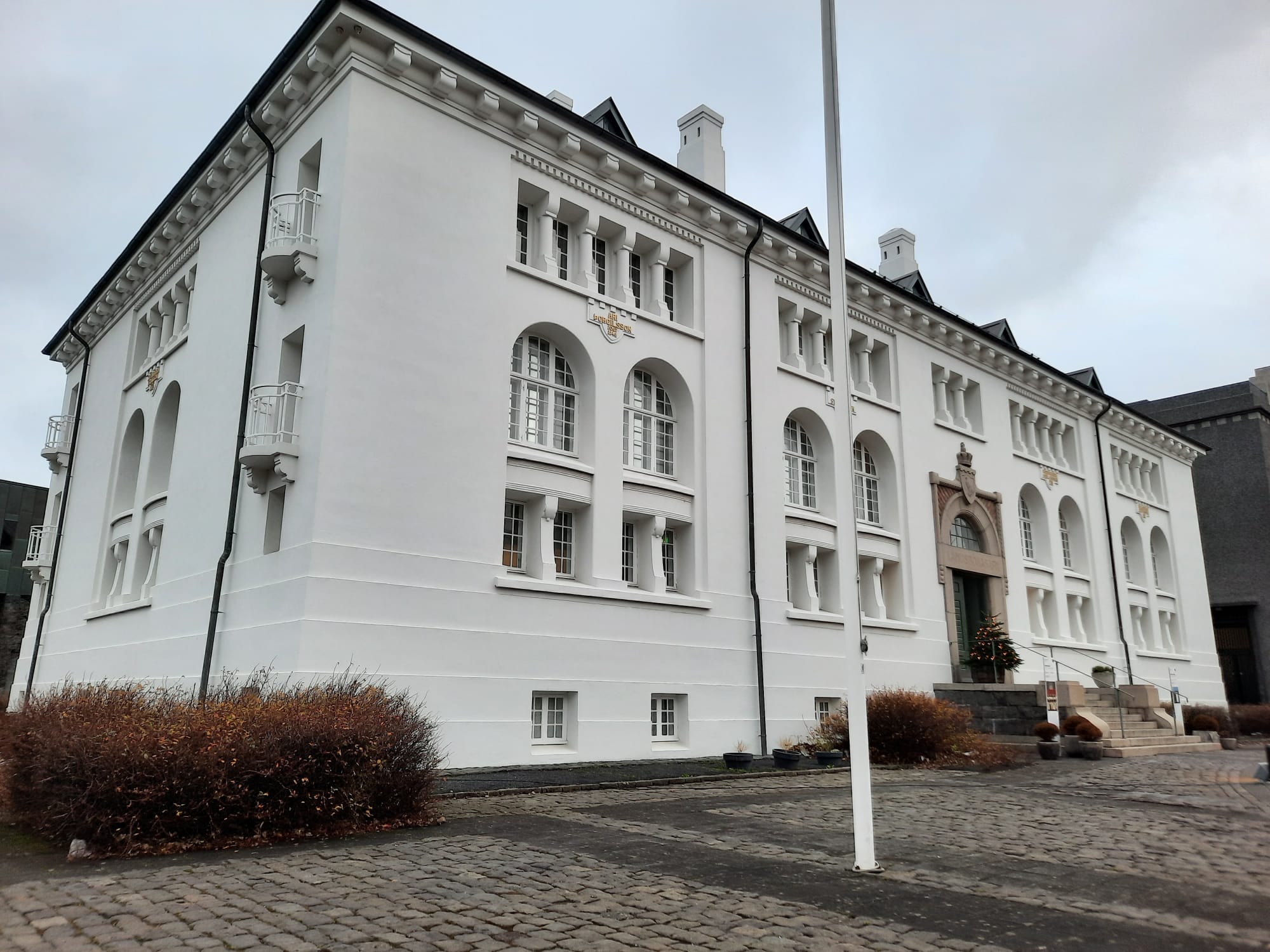
One thought on “Safnahúsið (The House Of Collections), Reykjavik”